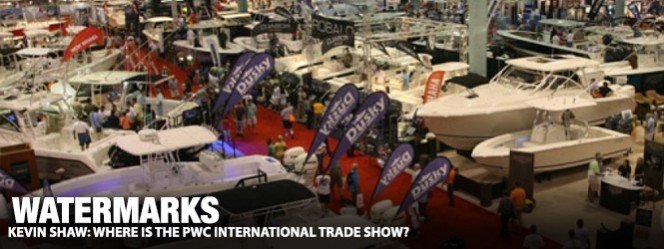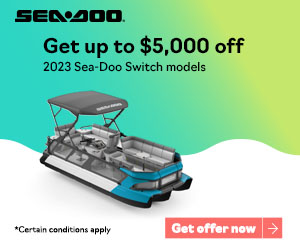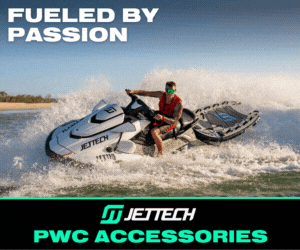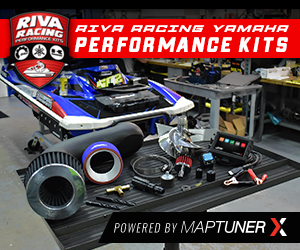There’s a universal truth that has been proven over and over again ad nauseum: competition breeds excellence. At no time has a monopoly provided the end-all of customer service or satisfaction. Had Henry Ford continued to operate unchallenged, Ford dealerships would still be nothing but fleets of all black sedans and trucks.
It only when the stakes are raised that companies and entrepreneurs feel the need to continually improve, add more features, variety and options to their products. It’s only when the threat of losing customers arises that companies truly rise to the occasion. It’s when faced with the threat of extinction that an animal bears its teeth. In the dog-eat-dog world of commerce, this threat is ever present.
In recent weeks, I’ve been really concerned with the health of the personal watercraft industry. Not just the sport, although racing is and ought to continue to be a viable proving ground and apparatus to appeal to a larger demographic of would-be clients, but the mechanics of the actual industry itself. Interestingly, all three actively do all the things that could pump new life into the industry, but for other products (more on that later).

First consider that for all three manufacturers, their watercraft divisions produce the smallest gains, provide the smallest returns and appeal to the smallest demographics. Motorcycles and side-by-sides continue to be their bread-and-butter lines, with snowmobiles, utility vehicles, generators and boats (respectively) bringing in bigger paychecks.
Simply put, producing PWC doesn’t pay.
In 1995, over 200,000 personal watercraft were sold. In 2013, that number was a paltry 29,500. So what gives? The modern personal watercraft has never been better. They’re smoother, more stable, more reliable, faster, cleaner, offer more storage, ease of use and safety. Of course, they’re double, if not triple the average cost of a runabout in 1996 (even with the price adjusted for inflation), but you’re getting a lot more for your buck too.
So again, what gives? Where is the PWC industry failing where others are succeeding? Frankly put, I think it’s professionalism. The industry built on a sport of “just having a good time” hasn’t – as a whole – taken itself too seriously in a long time. Only when big money was rolling in from ESPN and a couple beer companies did the watercraft industry carry itself like a grownup industry.
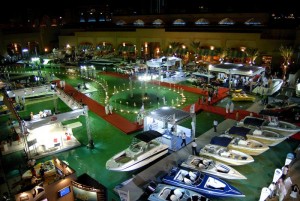
When the low hanging fruit of big sponsor money dried up, event promoters and would-be racers fled elsewhere. So too did the torrent of prize money reduce to a trickle. This in turn ate away at dealer sales, as both numbers of racers and race enthusiasts went elsewhere.
A sad fact is that humans are fickle creatures, and no matter how much of a bleeding heart you might have, the fact remains that money is a big motivator. Most people will follow where the money is. If the Long Beach-to-Catalina Offshore Enduro suddenly announced a purse of $5,000 for July’s event, you’d see a lot more than last year’s 30 participants. That’s a fact.
But as some people follow where the money is, money only goes where the people are. Consider Facebook. It was only until Facebook’s population reached absurd activity levels that advertisements and company pages became commonplace. The money followed the flow of people.
So, what’s the solution, you ask? Easy. Get more people aware of today’s PWC. As stated earlier, all three major manufacturers participate in full scale dealer shows, where manufacturers’ products share booth space with their entire product line. This is fine, and will ensure a large cross section of possible customers, but dealer shows aren’t specific to our industry.

Now, events like the New York and Miami Boat Shows are more focused towards boating and sees extravagant displays from Sea-Doo and Yamaha alike, even RIVA Racing and SBT, Inc. are present. But those are still dealer display events, and absent are the aftermarket manufacturers. Where do they get to showcase their wares? What’s missing from the personal watercraft industry is a trade show.
Many would think that the midway of the annual World Finals would be enough, but frankly, it’s not. It’s a dusty, windblown stretch of asphalt with people yelling over a cacophony of whining engines, loud speakers, announcers and each other. The goings on in each booth are overshadowed by the action on the water.
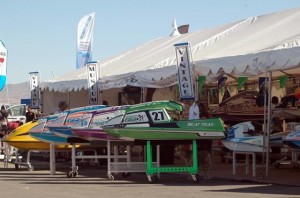
At a true trade show, manufacturers will have a set date each year to officially unveil their newest innovations, brand new skis, aftermarket hulls, engine components and so much else. With the automotive and motorcycle industries, test rides and demonstrations are often made available. Likewise, this can be done for PWC if the right venue is selected. San Diego, California’s oceanfront convention center is a sweet location, as is Miami, Florida.
But here’s the rub: participating in a trade show is expensive and thereby must be worthwhile. The timing, the public draw and the industry-wide appeal to bring in the most foot traffic is central to making a trade show successful. I’d suggest that Sea-Doo, Yamaha and Kawasaki wait to publicly unveil their latest vehicles for the show, as well as performance packages from RIVA and the like. This way, all eyes would be focused on the annual Personal Watercraft Expo (PWX).
But making this happen is a massive undertaking. What I’m suggesting is a major push by the American Watercraft Association – particularly on behalf of executive director Chris Manthos – to refocus the agency’s efforts to building and revitalizing the industry through organizing major manufacturers to rally together. This is already happening in other industries and now its our time.
Go Get Wet,
Kevin




